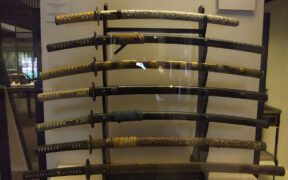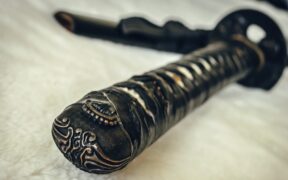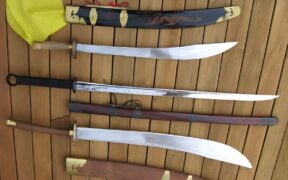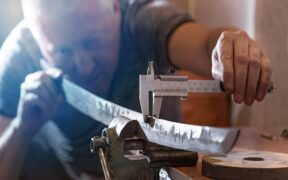Our content features commercial links to our products, committed to transparent, unbiased, and informed editorial recommendations. Learn More
Katana Length: How Long Should It Be and Why?
NO AI USED This Article has been written and edited by our team with no help of the AI
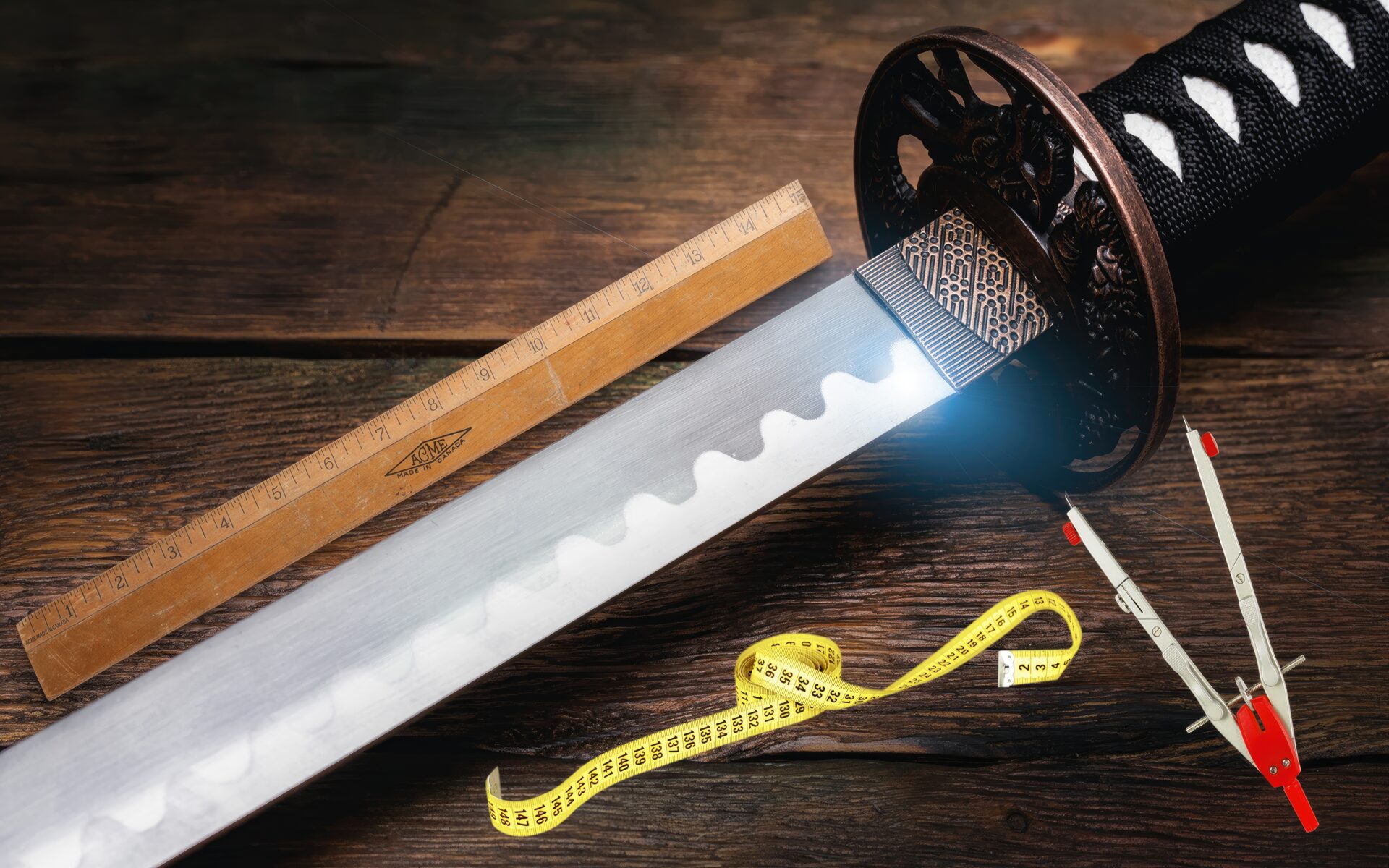
Having a sword of the correct length is important to fully understand the balance and cutting power of the katana’s strike. The appropriate katana length ensures weight distribution, precise and effective striking techniques, and the ideal size for each user.
This article will discuss everything you need to know about the katana length. We will consider the characteristics of the basic length, from the handle and scabbard to the blade’s edge, how this affects the katana, and how to choose a perfect katana length.
What is the Average Katana Length?

The most common length of a katana is around 39 inches (100 cm), making the blade of the weapon between 24 to 29 inches (60 to 70 cm), while the handle is between 10 to 12 inches (25 to 30 cm).
Although each bladesmith school in Japan may have had its own specifications for creating the perfect Katana, 39 inches (100 cm) was perfect for both control and power. This was also the ideal length for a high Medieval weapon in Japan, where the average height of a man was 5.2 feet (1.60 m).
The Three Lengths of the Katana Sword
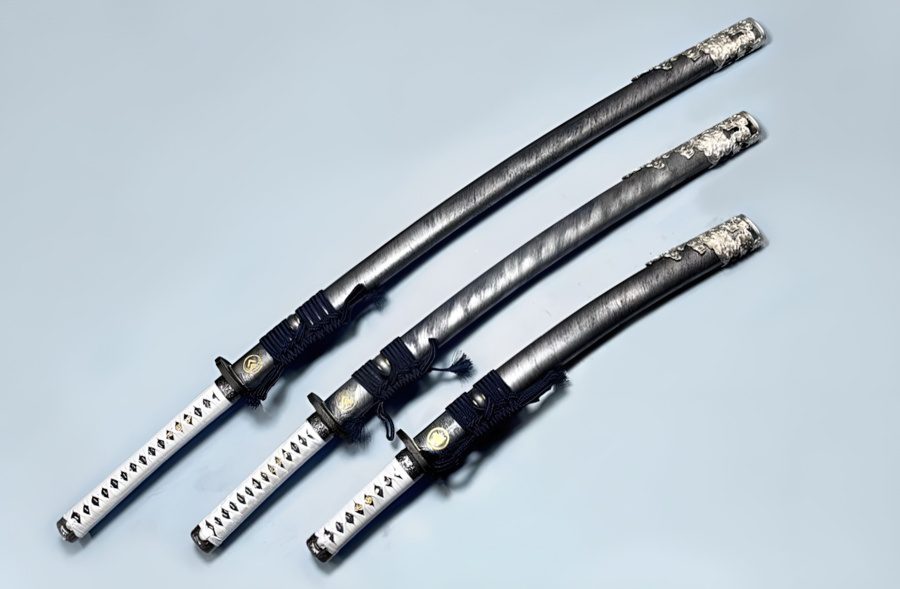
Samurai katana swords can be grouped into one of three categories according to the blade’s length and how it is mounted. The swords are measured in the Japanese traditional shaku unit of measurement.
The Japanese foot, or shaku, is a unit of length that comes from the Chinese chi. It was originally based on the distance from the tip of the thumb to the forefinger. The length varied depending on where it was used. Today’s standard is about 11.9 inches (30.3 cm).
- Under one shaku (11.9 inches) – tanto
- Between one and two shaku (11.9 to 24 inches) – wakizashi
- Over two shaku (above 24 inches) – katana
Anything over two shaku (24 inch / 61 cm) is called a daito, or a long sword. The katana has been considered a long sword and must be over the two shaku measurement. However, throughout history, there were three different sizes of katana based on their need. The same design was followed but with different lengths.
1. Ko-Katana – The Smallest Katana
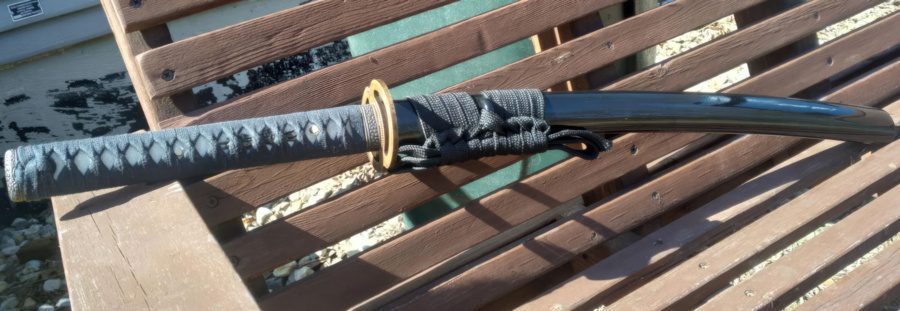
Ko means small in Japanese and perfectly describes the smaller ko-katana. The size of the ko-katana is based on a design found in historical texts as early as the Kamakura period (12th to 14th century) called uchi–gatana, a striking sword. This type of katana is the smallest, and it is not to be confused with the wakizashi, a part of the Samurai daisho sword set.
The ko-katana has the same tsuka handle measurements, is roughly the same size, and can be used with both hands. The difference in length is the nagasa blade which is usually shorter. The ko-katana has an overall length of around 24 to 30 inches (60 to 75 cm).
While the wakizashi might be slightly shorter, it has a handle constructed to be used one-handed, making it a secondary weapon. The ko-katana is still a two-handed daito sword used as a primary tool in compact spaces.
2. Katana
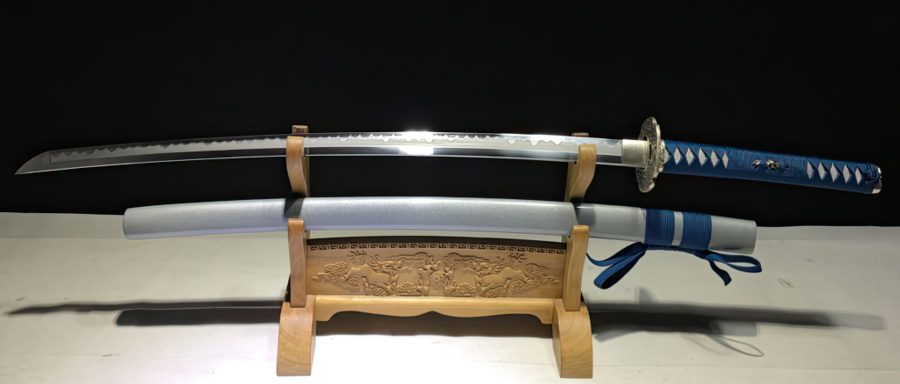
The regular katana size came after the need for a stronger and more compact blade that would excel the curved cavalry tachi blade and the short uchi–gatana. This blade was around 33 to 35 inches (85 to 90 cm) and periodically reached the mark of 39 inches (100 cm). This length for a katana was ideal for flexibility, speed, and range.
3. O-Katana – The Biggest Katana
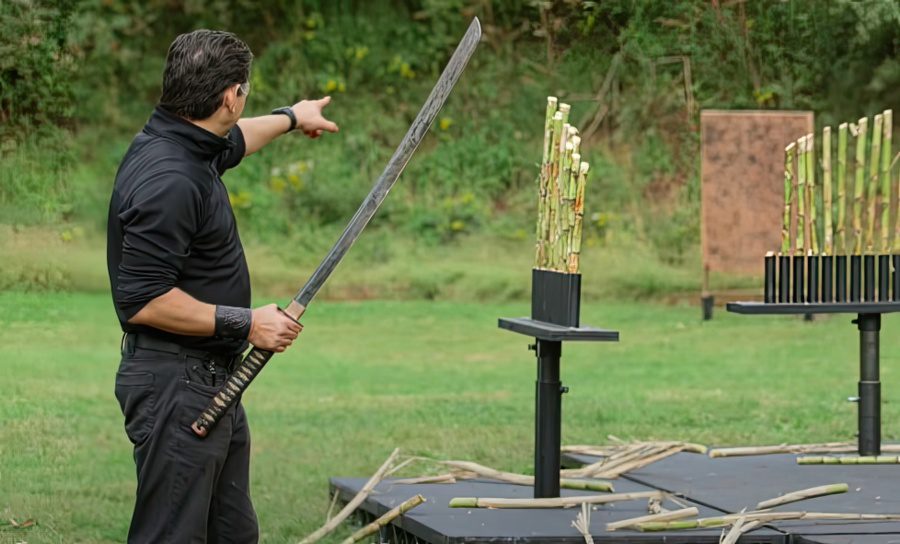
The largest katana sword is the o-katana. The prefix O means large in Japanese, giving the o-katana its name. Its use in history is debated and somewhat complicated, but the o-katana was heavily inspired by the Japanese battlefield greatsword known as nodachi or odachi.
A common size for an o-katana is 45 to 55 inches (115 to 140 cm), roughly the same size as a two-handed European longsword. This version of a larger katana would easily fit a six-foot (1.8 m) tall man, making it the ideal weapon to train with today as opposed to the traditional 39-inch (100 cm) katana that was designed for a five-foot (1.53 m) person.
Lengths of Katana Parts
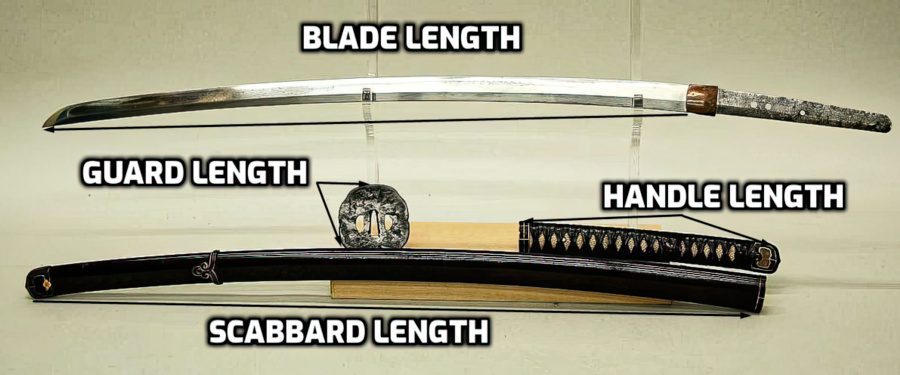
- overall length – 39 inches (99 cm)
- blade length – 29 inches (74 cm)
- handle length – 10 inches (25 cm)
- tsuba length – 2.7 inches (7 cm)
- scabbard length – 30 inches (76 cm)
A true replica of an authentic katana, called nihonto, is easily recognizable from its curved, thin, and long single-edged blade. It also sports a circular or square guard and a long handle that can be used with both hands. The following will analyze the lengths and sizes of each part of the katana.
Blade – Nagasa Length
A katana sword’s curved blade or nagasa is usually 24 to 32 inches (60 to 80 cm). A hand-forged katana’s blade will have this traditional length after a process of folding while creating the blade. Occasionally, a katana’s blade can extend 32 inches (80 cm).
Handle – Tsuka Length
The handle or tsuka of the Japanese katana is about 10 to 12 inches (25 to 30 cm) long, making it a large two-handed sword that can be used as a primary weapon of war. The tsuka should be almost ⅓ of the blade because it offers a firm and wide grasp for the katana user.
Guard – Tsuba Length
The guard or tsuba of the katana blade is about 2.7 inches (7 cm) when viewed vertically. This guard size makes it functional as a defending tool without limiting the user’s unsheathing and carrying capability.
While it serves as the main protector of the user’s hands, many tsuba was made larger or smaller during the peaceful Edo period to act as decoration pieces resulting in different lengths.
Scabbard – Saya Length
The scabbard or saya for the katana is usually as long as the blade, but it can sometimes be slightly longer, giving it an average length of around 24 to 32 inches (60 to 80 cm). Each katana sword has a scabbard specifically designed for it, meaning that a katana cannot go with just any scabbard.
How to Choose the Perfect Katana Length
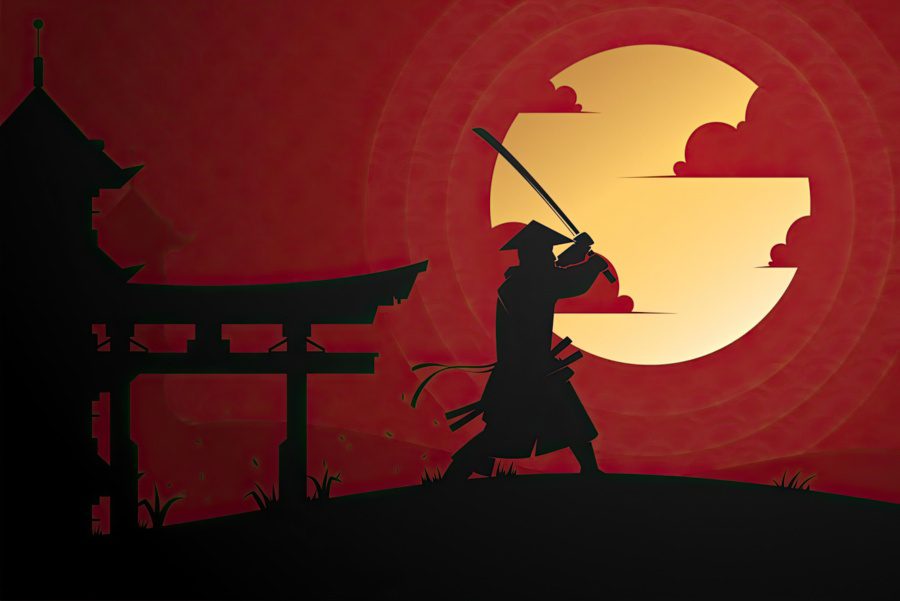
The length of the blade should be listed in the product description section of the merchant’s website. It is important to look for the measurements listed for the sword that you intend to buy. The blade and handle length will often be provided, so you can easily combine them to estimate the katana’s length.
If these measurements are inadequate for knowing how long of a sword you need, you can easily use one of these four katana length measuring methods.
Method 1 – Place the Katana Next to You
Hold the katana at your side so the tip is just above or at the same level as your ankle bone. If you prefer a slightly longer sword, leave at least an inch of space between the tip of the sword and the ground.
Method 2 – Your Height
When buying a katana sword, measure between your height and the length of the sword. This measurement chart below can help you choose the right sword.
Your height is shown on the left, while the length of the katana is on the right.
| Your Height | Katana’s Length |
|---|---|
| 4 ft 11 / 150 cm | 26.2 inches / 66.7 cm |
| 5 ft 1 / 155 cm | 26.8 inches / 68.2 cm |
| 5 ft 3 / 160 cm | 27.4 inches / 69.7 cm |
| 5 ft 5 / 165 cm | 28.0 inches / 71.2 cm |
| 5 ft 7 / 170 cm | 28.6 inches / 72.7 cm |
| 5 ft 9 / 175 cm | 29.2 inches / 74.2 cm |
| 5 ft 11 / 180 cm | 29.8 inches / 75.8 cm |
| 6 ft 1 / 185 cm | 30.4 inches / 77.3 cm |
| 6 ft 3 / 190 cm | 31.0 inches / 78.8 cm |
| 6 ft 5 / 200 cm | 32.2 inches / 81.8 cm |
This is the length of the katana blade. When taking measurements to find the appropriate katana length, add 30% to its size to account for the two-handed tsuka handle.
Method 3 – Your Forearm and the Katana’s Handle
The two-handed handle of the katana sword should be as long as your forearm to ensure it is the correct size for you. When purchasing a katana, look for the number for the handle’s size.
Measure your arm from elbow to wrist, giving you a good idea of how long your handle should be. The handle is usually in correct proportion with the blade, so it can be used as a guide to ensure the blade will be appropriate.
Method 4 – Training Katana Sword – Bokken & Iaito
The katana used for training can be made with materials perfect for testing the right size for you. The bokken is a wooden or bamboo version of a katana, while the iaito comes in a steel format. No matter the material used, swordsmiths should make these training Japanese swords in the appropriate katana size.
Do everything possible with this wooden or metal prop katana to get the feel of it. If it feels like the perfect size, obtain a katana with the same blade and handle length. Keep in mind that the wooden bokken katana will not weigh the same as the actual weapon. However, the iaito will be closer to the original sword’s weight.
How to Properly Measure a Katana’s Length
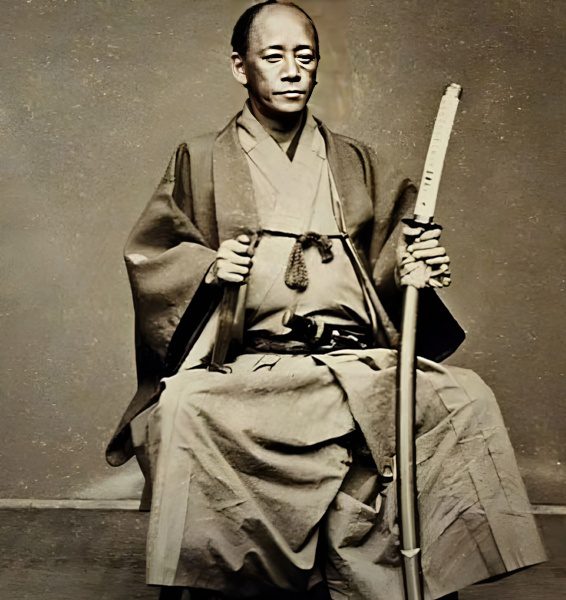
Measure the length of the ending of the handle or handguard and to the tip, or kissaki, of the blade. The katana sword has a slight curvature called sori. However, this curvature isn’t considered when measuring the sword’s length and can be overlooked. In some markets, the nagasa is the katana blade, known as a nagasa length.
To properly determine the overall blade length, measure the length from the kashira pommel at the beginning of the handle to the handguard. This can be referred to as a nakago length by some markets. With this number in mind, add the correct length number of the blade, and you will have successfully discovered your perfect katana size.
How Does Length Affect the Katana Sword?
A katana sword should feel like part of your body. That’s why having perfect proportions and an even weight distribution is crucial. The length plays a significant role and affects almost everything about the katana.
Weight
The heavier the katana sword, the harder it is to move and wield. Therefore, the longer the katana, the heavier it will be. Getting the appropriate length is critical to fully experience this Samurai sword’s cutting power and speed.
Because short ko-katanas are lighter and have less mass, they can swing faster and easily change direction. While a ninja might benefit from smaller lengths, a real katana length was larger and meant to be used with both hands.
Handling
If your Japanese katana is too big, it will be hard for you to swing and control. In addition, you put yourself and your training partner at risk of getting hurt when your swing is uncontrolled—wielding an o-katana benefits people six feet (1.8 m) or taller.
Handling a katana that is too large will be awkward and unorthodox, feeling more like a greatsword and functioning like a larger nodachi sword.
Use
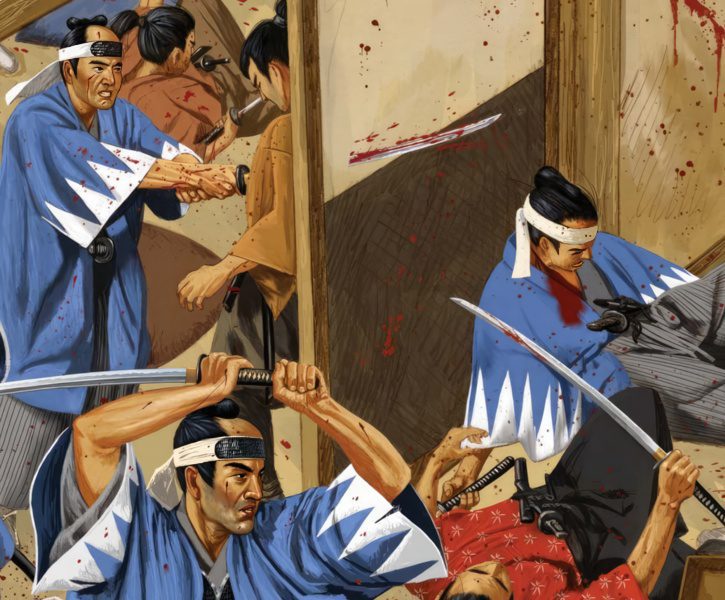
The correct length is vital when choosing a Katana in iaido, a Japanese katana sword martial art. Every extra inch of sword length adds a millisecond of delay, which can cost the life of a Samurai.
The katana, which is 39 inches (100 cm) long, can be a deadly weapon in most situations. Samurais have fought at close distances, such as in-door battles, sometimes fighting against spears, because they can quickly deflect incoming attacks.
The katana’s length and curvature ensure that the Katana’s center of mass is in the middle or at the second half of the blade. Increasing or decreasing the length, even slightly, causes the center of mass to shift. This diminishes the deadly cutting power of the katana, a sword many consider the best in history.
Conclusion
The Katana is known as the world’s strongest cutting tool and weapon only when it is in good shape and the perfect length. Every sword buyer should consider the length of the katana. The sword should feel like an extension of your arm and enable you to make swift movements.
